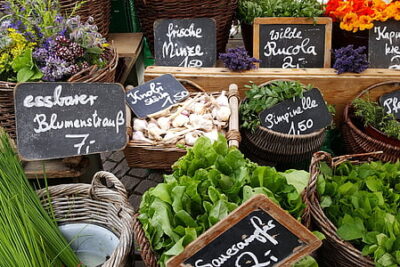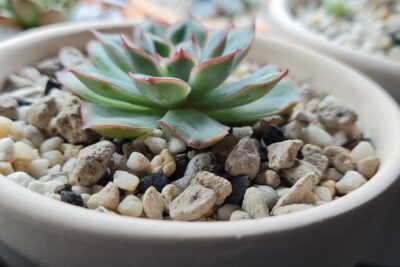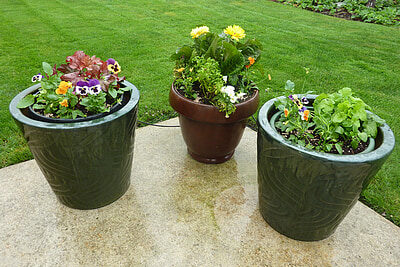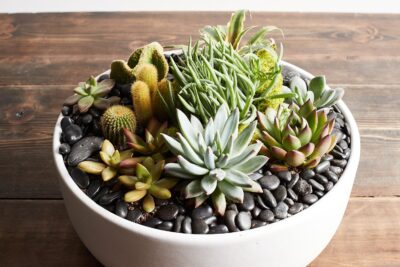
Optimal Number of Succulents per Pot: Finding the Right Balance

When it comes to succulents, their unique and vibrant appearance has made them a popular choice among plant enthusiasts. These drought-resistant plants are known for their ability to thrive in arid conditions, making them a low-maintenance option for those with a busy lifestyle. However, one question that often arises among succulent lovers is how many succulents should be planted in a single pot. Finding the optimal number of succulents per pot is crucial in order to maintain their health and ensure proper growth.
We will explore the importance of finding the right balance when it comes to the number of succulents per pot. We will discuss the factors that should be considered when determining the optimal number, such as the size of the pot and the types of succulents being planted. We will also provide tips and guidelines to help you achieve the perfect arrangement of succulents in your pots, ensuring their longevity and aesthetic appeal. Whether you are a succulent enthusiast looking to expand your collection or a beginner just starting out, this article will provide you with the information you need to create a stunning succulent display.
- Consider the size of the pot and the growth habits of the succulents
- Aim for approximately 1 inch of space between each succulent in the pot
- Take into account the ultimate size of the succulents when they reach maturity
- Group succulents with similar water and light requirements together in the same pot
- Avoid overcrowding the pot, as it can lead to competition for nutrients and water
- Regularly monitor the health and growth of the succulents in the pot and adjust as needed
- If necessary, repot succulents into larger pots to accommodate their growth
- Experiment with different arrangements and combinations of succulents to find the right balance
- Frequently Asked Questions
Consider the size of the pot and the growth habits of the succulents
When it comes to arranging succulents in a pot, finding the right balance is key. The optimal number of succulents per pot depends on a few factors, including the size of the pot and the growth habits of the succulents themselves.
First and foremost, consider the size of the pot. Succulents need enough space to grow and thrive, so choosing a pot that is appropriately sized is crucial. If the pot is too small, the succulents can become overcrowded, leading to stunted growth and an increased risk of disease. On the other hand, if the pot is too large, the succulents may not be able to establish a strong root system, which can also hinder their growth.
Next, take into account the growth habits of the succulents. Some succulents, such as Echeveria and Aeonium, naturally grow in rosette formations, with the leaves radiating outwards from a central point. These types of succulents can be arranged in a pot with the rosettes facing towards the center, allowing them to grow and fill out the space beautifully.
Other succulents, like Sedum and Crassula, have a more sprawling growth habit, with trailing stems that can cascade over the edges of a pot. For these succulents, you can arrange them in a way that allows their stems to drape over the sides, creating a cascading effect that adds visual interest to your arrangement.
 Indulge in the Divine Delight: Succulent and Heavenly Pies from Heaven
Indulge in the Divine Delight: Succulent and Heavenly Pies from HeavenAdditionally, consider the overall aesthetic you want to achieve. If you prefer a minimalist and clean look, you may opt for a single succulent as a focal point in a smaller pot. On the other hand, if you want to create a lush and vibrant display, you can group several succulents together in a larger pot, mixing different colors, textures, and shapes for a visually stunning arrangement.
In general, it is recommended to leave some space between each succulent to allow for growth and airflow. A good rule of thumb is to leave about an inch of space between each plant. This will give the succulents room to expand and prevent overcrowding, which can lead to various issues such as root rot and limited access to sunlight.
Remember, finding the optimal number of succulents per pot is a matter of balance. By considering the size of the pot, the growth habits of the succulents, and your desired aesthetic, you can create a visually appealing arrangement that allows each succulent to thrive and flourish.
Aim for approximately 1 inch of space between each succulent in the pot
When it comes to potting succulents, finding the right balance in terms of the number of plants per pot is essential. While succulents are known for their ability to thrive in dry conditions and limited root space, overcrowding can hinder their growth and overall health. So, what is the optimal number of succulents per pot? The general rule of thumb is to aim for approximately 1 inch of space between each plant.
Succulents have unique characteristics that make them well-suited for small containers. Their shallow root systems and ability to store water in their leaves allow them to tolerate cramped conditions to some extent. However, giving them enough space to grow and spread their roots is crucial for their long-term survival.
By allowing about 1 inch of space between each succulent, you facilitate air circulation and prevent excessive moisture buildup. This spacing also ensures that each plant has enough room to develop its root system without competing for resources with neighboring succulents.
 Combining Succulents: Can You Plant Them Alongside Other Plants?
Combining Succulents: Can You Plant Them Alongside Other Plants?Additionally, providing adequate spacing between succulents helps prevent the spread of diseases and pests. Overcrowded pots can create a favorable environment for pathogens and insects to thrive, leading to the decline of your beloved succulents. By giving them enough space, you promote better air circulation and reduce the risk of disease and pest infestations.
However, it's important to remember that the optimal number of succulents per pot may vary depending on the size and type of succulents you are working with. Larger succulents may require more space between each plant, while smaller ones can be planted closer together. Take into consideration the growth habits and ultimate size of the succulents when deciding on the spacing.
Tips for achieving the right balance:
- Start by selecting a pot that comfortably accommodates the number of succulents you plan to include.
- Consider the size and growth habits of the succulents to determine the spacing between each plant.
- When in doubt, err on the side of giving more space rather than overcrowding the pot.
- Regularly monitor the growth of your succulents and adjust the spacing if necessary.
- Remember to provide adequate drainage to prevent waterlogging, as this can be detrimental to succulents.
By finding the right balance and spacing between succulents in a pot, you can create a visually appealing arrangement that promotes healthy growth and longevity. So, take the time to plan and consider the needs of your succulents before potting them together, and enjoy the beauty and resilience of these fascinating plants.
Take into account the ultimate size of the succulents when they reach maturity
When deciding how many succulents to plant in a single pot, it is important to consider the ultimate size that each succulent will reach when it reaches maturity. Succulents come in various sizes, from small rosettes to large trailing vines. Understanding the growth habits and sizes of the succulents you plan to include in your pot will help you determine the optimal number.
Some succulents, such as Echeverias and Haworthias, tend to stay compact and grow in tight rosettes. These are perfect for smaller pots or arrangements with multiple succulents. On the other hand, succulents like Sedums and Senecios can spread and trail, requiring more space to grow. These larger succulents may be better suited for larger pots or as standalone centerpieces.
 Unveiling the Wealthy Potential of Money Tree Succulents
Unveiling the Wealthy Potential of Money Tree SucculentsConsider the spacing requirements of each succulent
In addition to the ultimate size of the succulents, it is essential to take into account their spacing requirements. Succulents need enough room to grow and spread their roots without overcrowding each other. Crowded succulents may compete for resources, resulting in stunted growth or poor health.
Some succulents, like Aloe Vera and Agave, have larger root systems and require more space between each plant. These succulents should be given enough room to spread out their roots and establish themselves properly. On the other hand, smaller succulents like Crassulas and Sempervivums can be planted closer together since they have smaller root systems and can tolerate being in close proximity to each other.
Balance the aesthetics and visual appeal
While considering the size and spacing requirements of succulents is crucial, it is equally important to find the right balance for aesthetics and visual appeal. The number of succulents you choose to include in a pot ultimately depends on the desired look and style you wish to achieve.
For a minimalist and sleek look, you may opt for just one or two larger succulents as a focal point in a pot. This allows each succulent to shine and creates a clean and uncluttered aesthetic. On the other hand, if you prefer a lush and abundant arrangement, you can fill the pot with multiple smaller succulents, creating a vibrant and visually appealing display.
Consider the colors, textures, and shapes of the succulents you plan to combine. Some succulents have striking colors or unique shapes that can create a stunning focal point. Experiment with different combinations to find the right balance of succulents that complement each other and create a visually pleasing arrangement.
- Tip: If you're unsure about the optimal number of succulents to include in a pot, start with a few and gradually add more as you see how they grow and interact with each other. This way, you can adjust the arrangement as needed and ensure each succulent has enough space to thrive.
The optimal number of succulents per pot depends on the ultimate size of the succulents, their spacing requirements, and the desired aesthetic. By considering these factors, you can create a balanced and visually appealing succulent arrangement that allows each plant to thrive.
Group succulents with similar water and light requirements together in the same pot
 Best Succulent Ground Covers: Choosing the Perfect Garden Plants
Best Succulent Ground Covers: Choosing the Perfect Garden PlantsWhen it comes to succulent arrangements, it is important to consider the water and light requirements of each individual plant. Grouping succulents with similar needs together in the same pot can help create an optimal growing environment for each plant.
Succulents come in a wide variety of shapes, sizes, and colors, and each species has its own specific needs when it comes to watering and sunlight. Some succulents prefer bright, direct sunlight, while others thrive in partial shade. Similarly, some succulents require infrequent watering, while others need more regular moisture.
By carefully selecting succulents with similar water and light requirements, you can ensure that each plant receives the appropriate amount of sunlight and water. This will not only promote healthy growth but also help prevent the risk of overwatering or underwatering.
Benefits of grouping succulents with similar needs
- Efficient watering: When succulents with similar water requirements are grouped together, it becomes easier to water them all at once. This saves time and ensures that each plant receives the right amount of moisture.
- Consistent light exposure: Placing succulents with similar light preferences in the same pot helps ensure they all receive the appropriate amount of sunlight. This prevents certain plants from getting too much or too little light, which can lead to poor growth or even sunburn.
- Easier maintenance: Grouping succulents with similar needs makes it simpler to monitor their overall health and address any issues. It allows you to focus on a specific set of care instructions rather than trying to cater to a wide range of requirements.
- Visual harmony: By selecting succulents that not only have similar care needs but also complement each other in terms of color, texture, and size, you can create a visually pleasing arrangement. This adds an aesthetic appeal to your succulent display.
When choosing which succulents to group together, consider factors such as their water requirements, light preferences, and growth habits. It's also important to ensure that the pot you choose is large enough to accommodate the number of succulents you plan to group together.
Remember, finding the right balance in terms of the number of succulents per pot is key to creating a thriving and visually appealing arrangement. So, take the time to research and experiment with different combinations until you find the perfect balance for your succulent collection.
Avoid overcrowding the pot, as it can lead to competition for nutrients and water
When it comes to succulent gardening, one of the key factors to consider is the optimal number of succulents per pot. While it may be tempting to pack as many plants as possible into a single container, overcrowding can actually have negative effects on the health and growth of your succulents.
 Hanging Succulents on Walls: Non-Damaging Techniques Guide
Hanging Succulents on Walls: Non-Damaging Techniques GuideCompetition for nutrients and water
One of the main reasons to avoid overcrowding your succulents is the competition for nutrients and water. Each plant requires a certain amount of these resources to thrive, and when too many succulents are crammed into a single pot, they end up fighting for limited resources.
This can lead to stunted growth, nutrient deficiencies, and even root rot. Succulents thrive in well-draining soil, and when the pot is overcrowded, the excess moisture from watering may not have a chance to evaporate, causing the roots to become waterlogged.
Striking a balance
So, how many succulents should you plant in a single pot? The answer depends on the size and type of succulents you are working with.
For larger succulents, such as Echeverias or Aeoniums, it is best to give them more space to spread out their roots. A good rule of thumb is to allow at least 2-3 inches of space between each plant. This will ensure that each succulent has enough room to grow and access the necessary resources.
On the other hand, smaller succulents like Sedums or Haworthias can be planted closer together. Aim for around 1-2 inches of space between each plant in this case. These smaller succulents often have shallow root systems and can tolerate being in closer proximity to one another.
 Surprise Mom with Stunning Succulents: The Perfect Mother's Day Gift
Surprise Mom with Stunning Succulents: The Perfect Mother's Day GiftConsider the growth potential
It's also important to consider the growth potential of the succulents you are planting. Some types of succulents, like Agave or Aloe, can grow quite large over time. If you plant too many of these in a single pot, they may quickly outgrow the space and become crowded.
On the other hand, certain succulents, such as Sempervivums or Graptopetalums, naturally form rosettes and can be planted closer together as they grow in a more compact manner.
Final thoughts
Ultimately, finding the right balance when it comes to the number of succulents per pot is crucial for their overall health and well-being. Avoid overcrowding, provide enough space for each plant to grow, and consider the growth potential of the succulents you are working with. By finding the optimal number of succulents per pot, you can create a visually appealing arrangement while ensuring the longevity and success of your succulent garden.
Regularly monitor the health and growth of the succulents in the pot and adjust as needed
When it comes to planting succulents in pots, finding the optimal number of plants per pot is crucial for their health and overall growth. It's important to regularly monitor the condition of the succulents and make adjustments as needed to ensure they thrive in their environment.
One of the key factors to consider is the space available in the pot. Succulents need room to grow and spread their roots, so overcrowding can hinder their development. By monitoring the health and growth of your succulents, you can identify if they are becoming too cramped and need more space.
 Sending Succulents: The Perfect Gift for Plant Lovers
Sending Succulents: The Perfect Gift for Plant LoversAdditionally, the size of the succulents should also be taken into account. Some succulents naturally grow larger than others, so it's important to choose plants that are compatible in terms of size. This will help prevent one succulent from dominating the pot and shading out smaller ones.
Another factor to consider is the specific needs of the succulents. Different species have different requirements for sunlight, water, and nutrients. By carefully selecting the succulents that have similar needs, you can create a harmonious environment in the pot.
It's also worth mentioning that the visual appeal of the succulent arrangement should be considered. A balanced and aesthetically pleasing arrangement can enhance the overall look of the pot. Consider the colors, textures, and shapes of the succulents when deciding how many to plant in a pot.
To find the right balance, it's recommended to start with a smaller number of succulents and observe their growth over time. This will give you a better understanding of how they interact with each other and the pot's environment. If necessary, you can always add or remove succulents to maintain the optimal number.
Finding the optimal number of succulents per pot requires careful consideration of factors such as space, size, needs, and visual appeal. By regularly monitoring the health and growth of the succulents and making adjustments as needed, you can create a thriving and visually appealing succulent arrangement.
If necessary, repot succulents into larger pots to accommodate their growth
As succulents grow, it is important to ensure they have enough space to thrive. One of the key factors in maintaining healthy succulents is finding the optimal number of plants per pot. While it may be tempting to overcrowd your pots with an abundance of succulents, this can actually hinder their growth and overall health.
 Find the Best East Side Succulent Shops for All Your Plant Needs!
Find the Best East Side Succulent Shops for All Your Plant Needs!When determining the optimal number of succulents per pot, it is crucial to consider their individual growth habits and requirements. Some succulents, such as Echeveria, have a rosette-like growth pattern and tend to spread out horizontally. These types of succulents typically require more space between them to allow for proper air circulation and prevent overcrowding.
On the other hand, succulents like Haworthia or Aloe Vera tend to grow vertically, forming tall and slender stems. These succulents often have a more compact growth habit and can tolerate being planted closer together in a pot.
Factors to Consider for the Optimal Number of Succulents per Pot
- Growth Habit: Consider the specific growth habit of each succulent species or variety. This will help you determine whether they need more space to spread out or if they can be planted closer together.
- Mature Size: Research the mature size of each succulent and plan accordingly. Keep in mind that succulents will grow and may require more space as they reach their full size.
- Root System: Take into account the root system of the succulents. Some succulents have shallow roots, while others develop deep and extensive root systems. Ensure there is enough room for the roots to grow and spread without becoming overcrowded.
- Watering Needs: Succulents have different watering requirements, and overcrowding can affect their ability to absorb water. Consider the watering needs of each succulent and ensure there is enough space for proper irrigation.
By considering these factors, you can strike the right balance and determine the optimal number of succulents per pot. Remember, it is better to provide a bit more space than to overcrowd your succulents. Giving each plant enough room to grow will promote healthier growth, prevent diseases, and ensure the longevity of your succulent garden.
So, next time you repot your succulents or start a new arrangement, take the time to plan and consider the optimal number of succulents per pot. Your succulents will thank you with their vibrant and flourishing appearance!
Experiment with different arrangements and combinations of succulents to find the right balance
When it comes to succulent arrangements, finding the optimal number of succulents per pot is all about striking the right balance. Too few succulents can leave your arrangement looking sparse and incomplete, while overcrowding can hinder their growth and overall aesthetic appeal. So, how do you find that perfect balance? Well, it all comes down to experimentation and a little bit of trial and error.
1. Consider the size of your pot
 Discover the Best Online Shops for Succulents in a Box
Discover the Best Online Shops for Succulents in a BoxBefore diving into arranging your succulents, it's important to take into account the size of your pot. Larger pots can accommodate more succulents, while smaller pots may require a more minimalistic approach. Keep in mind that succulents need enough space to grow and spread their roots, so choose a pot size accordingly.
2. Follow the "thriller, filler, spiller" rule
A popular technique for creating visually appealing succulent arrangements is the "thriller, filler, spiller" rule. This rule involves selecting a focal point succulent (the "thriller"), filling in the gaps with complementary succulents (the "filler"), and allowing some trailing succulents to spill over the edges (the "spiller"). By following this rule, you can ensure a balanced arrangement that showcases the beauty of each individual succulent.
3. Pay attention to the growth patterns and sizes of your succulents
Each succulent has its unique growth pattern and size. Some succulents thrive in compact arrangements, while others need more space to spread out. When selecting succulents for your arrangement, consider their growth habits and sizes. Mix and match succulents with varying heights, textures, and shapes to create an eye-catching display.
4. Don't be afraid to rearrange and experiment
The beauty of succulent arrangements is that they are highly versatile and can be easily rearranged. If you're not satisfied with the initial arrangement, don't hesitate to make changes and experiment. Move succulents around, swap out certain plants, or even add new ones to achieve the desired look. Sometimes, it's through trial and error that you stumble upon the perfect balance.
 Getting Started with DIY Succulent Planting: Getting Dirty!
Getting Started with DIY Succulent Planting: Getting Dirty!5. Regularly assess and adjust your arrangement
Succulents are living plants that continue to grow and evolve. As such, it's important to regularly assess your arrangement and make any necessary adjustments. Some succulents may outgrow their allotted space, while others may require more sunlight or water. Keep an eye on your arrangement and make changes accordingly to ensure it remains healthy and visually pleasing.
Finding the optimal number of succulents per pot is a matter of experimentation, taking into account the size of your pot, following the "thriller, filler, spiller" rule, considering growth patterns and sizes, and being open to rearranging and adjusting your arrangement. With a little patience and creativity, you can create a succulent arrangement that strikes the perfect balance.
Frequently Asked Questions
1. How many succulents should I put in one pot?
It is generally recommended to have one succulent per pot to ensure adequate space for growth and proper drainage.
2. Can I put multiple succulents in one pot?
Yes, you can put multiple succulents in one pot, but make sure to leave enough space between each plant to prevent overcrowding and allow for proper air circulation.
3. What is the ideal spacing between succulents in a pot?
For small to medium-sized succulents, a spacing of about 2-3 inches between each plant is recommended. Larger succulents may require more space.
4. Are there any benefits to planting multiple succulents in one pot?
Planting multiple succulents in one pot can create an aesthetically pleasing arrangement and make it easier to care for and display your collection of succulents.
If you want to read more articles similar to Optimal Number of Succulents per Pot: Finding the Right Balance, you can visit the Planters and Arrangements category.






You Must Read